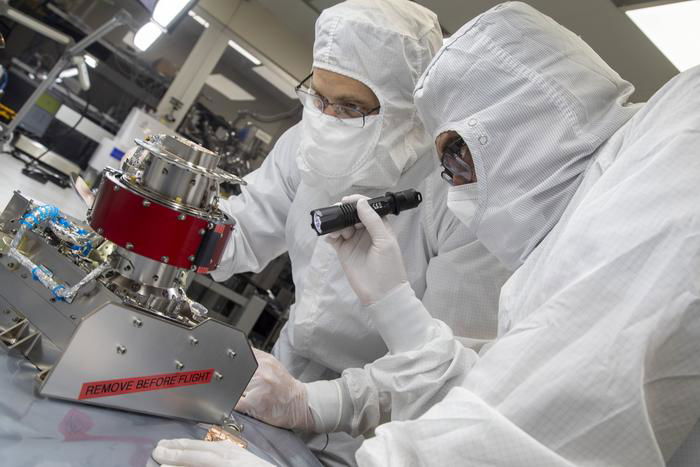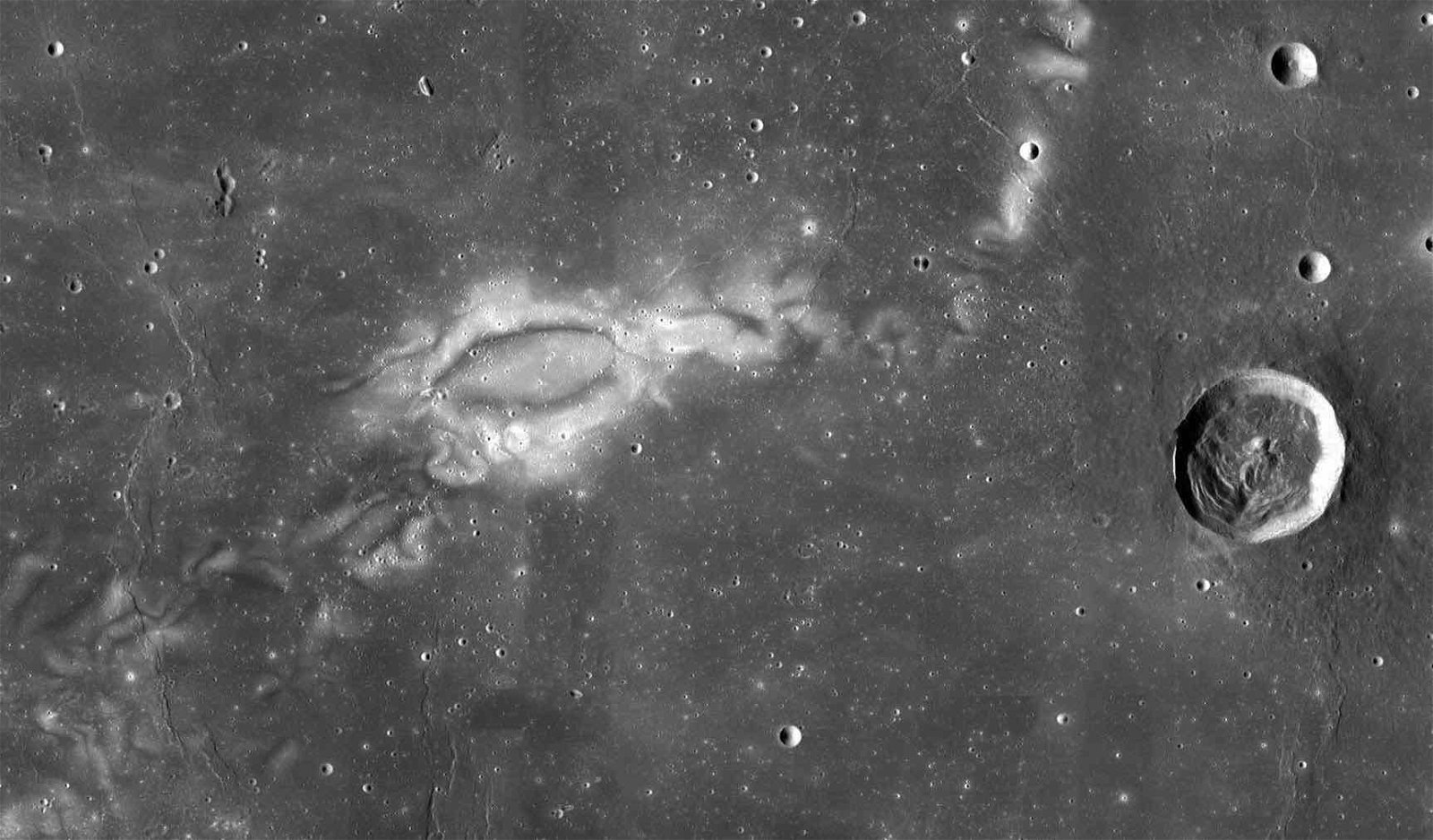A next-generation plasma spectrometer has been delivered to NASA that will assist the agency’s investigations into a mysterious area on the Moon that is the location of an unexplained magnetic anomaly.
The Magnetic Anomaly Plasma Spectrometer (MAPS), designed by Southwest Research Institute (SwRI), will be incorporated into the lunar lander NASA deploys as part of its Lunar Vertex investigation next year, which will focus on the Reiner Gamma region, a mysterious area on the Moon’s nearest-facing side which produces a localized magnetic field.
The novel plasma spectrometer will focus on interactions between the solar wind and materials located on the surface of the Moon, which appear to give rise to unusual bright and dark patterns in its soil known as lunar swirls. These strange swirling patterns are known to indicate the presence of anomalous areas on the Moon where an abundance of magnetic rocks is located.
Although Earth is encased within a magnetosphere that helps to shield it against solar winds, the Moon has no such protective magnetic field and is bombarded by highly energized particles emanating from the Sun. However, there are regions where magnetic fields do occur on the Moon, which offset them similar to how water is deflected off the top of an umbrella during heavy rain.
MAPS lead investigator Jörg-Micha Jahn, Ph.D., said the device will “investigate how the influx of the solar wind interacts with the localized magnetic fields and how it could affect features on the lunar surface.” Jahn says that SwRI’s novel spectrometer should be able to assist NASA in finding out whether the solar wind is delivering charged particles all the way to the lunar surface that could play some role in the unusual magnetic phenomenon.
While traditional spectrometers split light into wavelengths, MAPS will perform a similar function with particles, providing an image in three dimensions of their movement and energetic properties that will help NASA scientists understand the ways that the solar wind is influenced by the magnetic anomaly at Reiner Gamma.
Jahn told The Debrief in an email that spectrometers like the one SwRI designed for NASA possess two primary components: the sensor it uses to steer, select, and detect particles; and the support electronic components, which operate the instrument, in addition to providing power and data processing.
Although an earlier generation of the same technology had been employed previously on the ESA’s Rosetta mission, which rendezvoused with comet 67P/Churyumov-Gerasimenko, the latest iteration that came to fruition with MAPS has seen several improvements.
“Historically, electronics become obsolete over time,” Jahn told The Debrief. “Hence all the electronics on MAPS are modern designs.”
“Superficially viewed, the MAPS performance is similar in some areas to that of [the Rosetta Ion and Electron Sensor, or IES] because what we measure is very similar,” Jahn added. “But underneath MAPS is a modern instrument that has a lot more operational flexibility, and crucially, it has twice (electrons) and four times (ions) the spatial resolution of IES.”


Jahn says the increased spatial resolution the new system provides will allow researchers to know where charged particles originate from more accurately than in past missions.
“This is crucial for understanding the effect of the Reiner Gamma magnetic fields on the plasma streaming from the Sun,” Jahn said. “Will the plasma be deflected? How much plasma is hindered from reaching the surface?”
“Because electrons are so light,” Jahn said, “we can use them to attempt to map the magnetic field of Reiner Gamma. Similar to Computer Tomography, the Sun moves across the sky of the Moon, exposing Reiner Gamma to its plasma streams from different directions. By measuring what reaches the ground, we hope to be able to extract information about the shape of the field from those observations.”
Additionally, the MAPS instrument will collect data that even the best orbital spacecraft currently observing the Moon cannot obtain, providing data at resolutions greater than four times what they can currently provide, thanks in large part to the power digital power supply capabilities and other features MAPS is equipped with.
“MAPS incorporates a state-of-the-art digitally controlled high voltage power supply that enables a wider field of view for detection of particles and enhanced energy resolution,” said MAPS project manager Prachet Mokashi in an email to The Debrief.
“To complement these, MAPS features an updated data handling system that enables much higher data collection and transmission rates,” Mokashi added. “All these technology improvements will enable MAPS to measure the 3-D distribution of plasma more accurately and help answer questions about the lunar surface magnetic anomalies and their interactions with the solar wind.”
Along with data that NASA hopes to use to understand the Reiner Gamma region’s magnetic anomaly, additional data obtained by the spectrometer will help scientists understand a range of other phenomena, which include erosion that occurs on the surfaces of distant planets and their surrounding moons, as well as similar occurrences on the exterior of asteroids and comets.
Overall, Jahn said that he is glad “to be able to point to something as familiar as the Moon and to know that an instrument [we] developed will be up there helping us to understand Earth’s closest neighbor.”
“We are looking for clues to unravel the magnetic mysteries of the Moon and what they tell us about its formation and evolution,” Jahn said.
Micah Hanks is the Editor-in-Chief and Co-Founder of The Debrief. He can be reached by email at micah@thedebrief.org. Follow his work at micahhanks.com and on Twitter: @MicahHanks.

